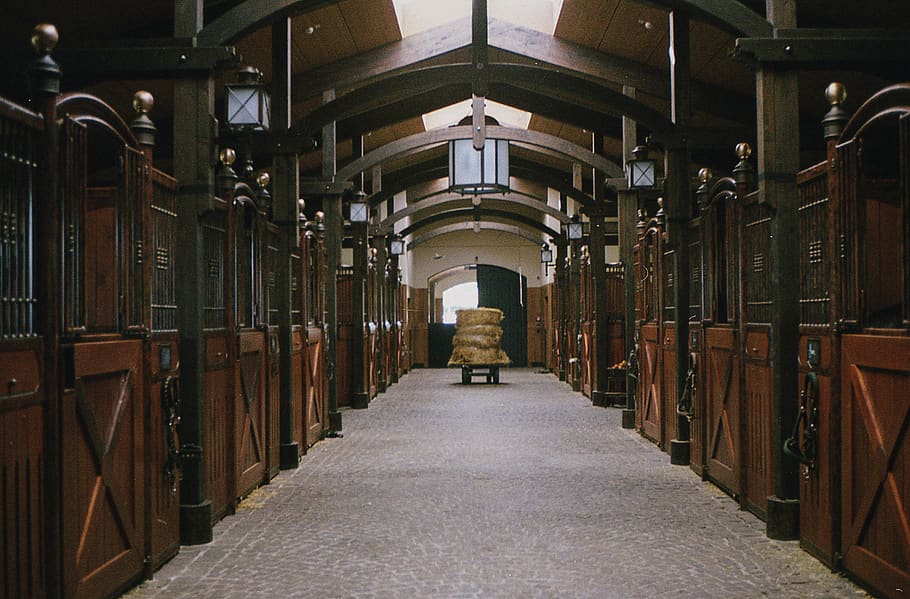Random Drug Testing Set to Expand in Horse Racing Stables
Random drug testing set to expand in horse racing stables in the wake of a recent cocaine-positive test from a horse at Brighton racecourse, the horse racing industry is poised to implement widespread random drug testing for stable staff.
This development comes as trainer Ed Dunlop received a one-year suspended disqualification after his horse, Lucidity, tested positive for a cocaine metabolite in July 2023.
 Ed Dunlop
Ed DunlopWhy Is Random Drug Testing Set to Expand in Horse Racing Stables?
Lucidity, trained by Ed Dunlop, has been disqualified from her second-place finish at Brighton. While the British Horseracing Authority (BHA) did not blame Dunlop for the positive test, the incident has highlighted the need for stricter measures to prevent drug contamination in racing stables.
The severity of potential punishments for cocaine positives has increased in recent years. Previously, similar cases resulted in fines, such as those imposed on trainer Jeremy Noseda in 2015 and 2018.
However, Dunlop's case demonstrates a shift towards more significant penalties, even when the trainer is not directly at fault.
Industry-Wide Response
In response to this incident, Dunlop, who was recently elected chair of the Newmarket Trainers Group, is spearheading efforts to introduce random drug testing for all racing stable staff in Newmarket.
He has invited the BHA to collaborate on this initiative, aiming to promote a healthier and safer environment in the racing industry.
Mark Johnston, Britain's most prolific trainer, has already implemented such measures at his Middleham yard, now run by his son Charlie. Johnston reported positive outcomes from the quarterly random testing introduced in 2021, despite some staff departures due to positive tests or unwillingness to be tested.
 Brighton Racecourse photo by Kenneth Davidson
Brighton Racecourse photo by Kenneth DavidsonImplementation and Challenges
Dunlop is in the process of introducing random testing in his own yard, drafting consent forms for staff to facilitate these tests. The National Trainers Federation is being consulted to explore the possibility of implementing this practice across the industry.
Johnston believes that rolling out random testing across other yards would be straightforward and highly recommended. He emphasized the importance of such measures in mitigating the risks of contamination and cross-contamination, which, although relatively rare, can have serious consequences.
Implications for the Sport
The introduction of random drug testing for stable staff represents a significant shift in the racing industry's approach to maintaining integrity and safety. However, concerns have been raised about the potential impact on public perception.
Mark Johnston expressed sympathy for Dunlop's situation, noting that such incidents might be misinterpreted by the public as intentional doping or cheating, even when that's not the case.
Looking Ahead
As the racing industry grapples with these challenges, the implementation of random drug testing for stable staff appears to be gaining momentum. This proactive approach aims to safeguard the sport's integrity, ensure the welfare of horses, and maintain public confidence in horse racing.
However, it also raises questions about staff privacy, employment practices, and the broader implications for the industry's image.
The coming months will likely see further discussions and potential policy changes as the horse racing community works to address these complex issues and adapt to the evolving landscape of drug testing and regulation in the sport.
 Horse Racing Stables
Horse Racing StablesExpanding the Scope: Beyond Stable Staff
While the initial focus of random drug testing has been on stable staff, the potential for contamination extends to other individuals who come into close contact with horses, including jockeys, trainers, and veterinarians.
Jockeys as Potential Sources of Contamination
Jockeys, who have direct physical contact with horses during races and sometimes during training, could indeed be another potential source of contamination.
Although jockeys are already subject to regular drug testing for performance-enhancing substances and recreational drugs, these tests are typically conducted at racecourses and may not capture all instances of drug use.
 Jockeys wait for their mounts
Jockeys wait for their mountsConsiderations regarding jockeys
1. Physical contact: Jockeys' sweat or other bodily fluids could potentially transfer trace amounts of substances to horses during races or training sessions.
2. Timing of contact: Jockeys often mount horses shortly before races, which could lead to more recent contamination that might not be detected in pre-race stable checks.
3. Multiple interactions: Jockeys typically ride horses from various stables, potentially increasing the risk of cross-contamination if not properly managed.
Other Potential Sources
1. Trainers and assistant trainers: Like stable staff, they have regular, close contact with horses.
2. Veterinarians and other medical staff: They handle horses frequently and administer treatments, which could be a potential source of accidental contamination.
3. Transportation staff: Those responsible for moving horses between locations could also be considered in comprehensive testing programs.
4. Farriers: Regular hoof care puts farriers in close contact with horses, making them another group to consider in contamination prevention efforts.
Implications for Testing Programs
The inclusion of jockeys and other racing professionals in random drug testing programs would require careful consideration:
1. Expanded testing protocols: Current testing programs for jockeys might need to be augmented to include more frequent or random tests.
2. Timing of tests: Consideration of when tests are conducted in relation to races and training sessions.
3. Privacy and legal concerns: Expanding testing to cover more individuals would need to address privacy rights and employment law considerations.
4. Industry-wide cooperation: Implementing comprehensive testing across all potential sources of contamination would require coordination between various racing bodies, stables, and professional associations.
Conclusion
While the current focus on stable staff is an important step in preventing drug contamination in horse racing, a truly comprehensive approach would need to consider all individuals who come into close contact with horses.
This includes jockeys, trainers, veterinarians, and other racing professionals. As the industry continues to grapple with these issues, it's likely that testing and prevention strategies will evolve to encompass a wider range of potential contamination sources, further enhancing the integrity and safety of the sport.
Back to Trainers from Random Drug Testing Set to Expand in Horse Racing Stables
Your second block of text...

You Might Like These
Kentucky Derby Odds: Will there be a hometown favorite?
Preakness Stakes Odds: Will the champions face fresh challengers?
Belmont Stakes Odds: At 1½ miles, stamina becomes the great equalizer as longshots can threaten.
Breeders' Cup Odds: International talent collides with American speed, reshuffling expectations across the board.
Dubai World Cup Odds: Under desert lights, can a Japanese sensation prevail against the world's elite.
Pegasus Cup Odds: Retirement beckons for champions seeking one final payday at America's richest race.
Bet on Horses: Every wager tells a story of hope against mathematical probability.
Kentucky Derby Betting: Beneath fancy hats and mint juleps, fortunes change hands with each thundering hoof.
Preakness Stakes Betting: The middle jewel rewards those who recognize when Derby form holds true.
Belmont Stakes Betting: Distance separates champions from pretenders when the final furlong tests them all.
Breeders Cup Betting: Global racing converges for two days where value hides in plain sight.

Returns Policy: Once a customer has agreed to pay for a product or service no returns will be permitted or payments returned.
All PayPal transactions are subject to the PayPal Privacy Policy
Privacy Policy: Personal details provided to this site by an individual may be shared with third parties unless requested otherwise.
Above policies updated 15 March 2018



